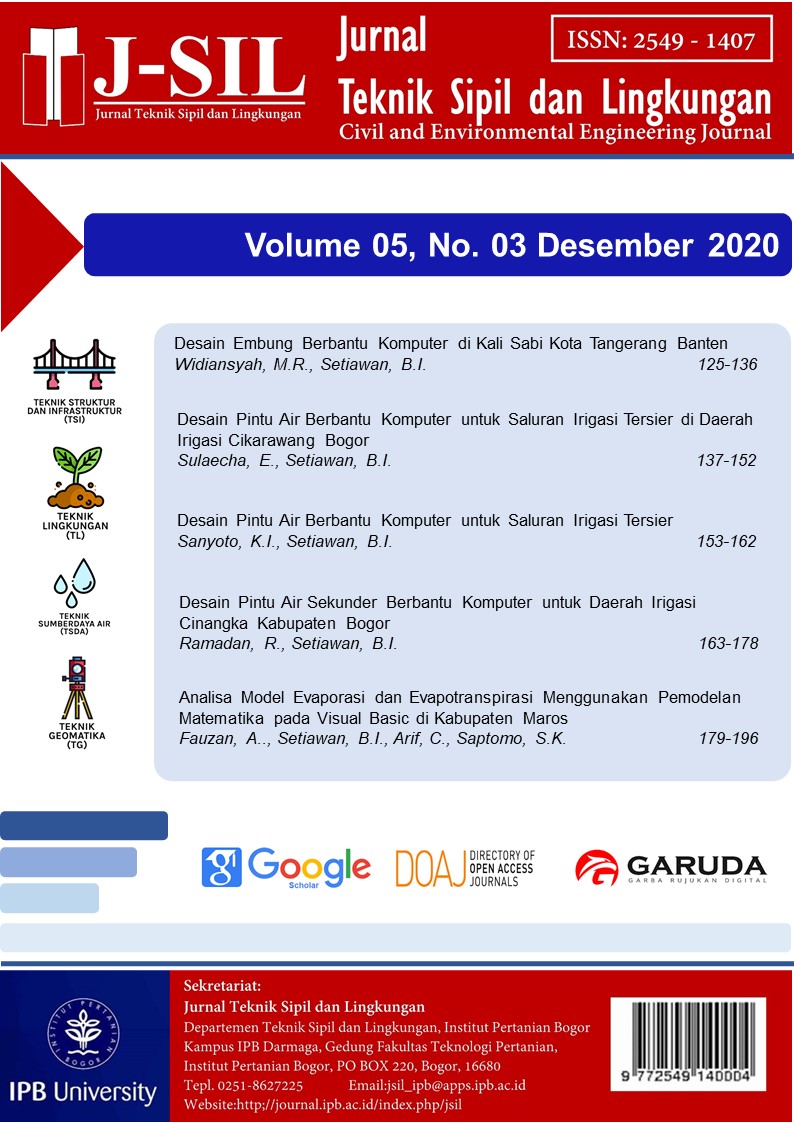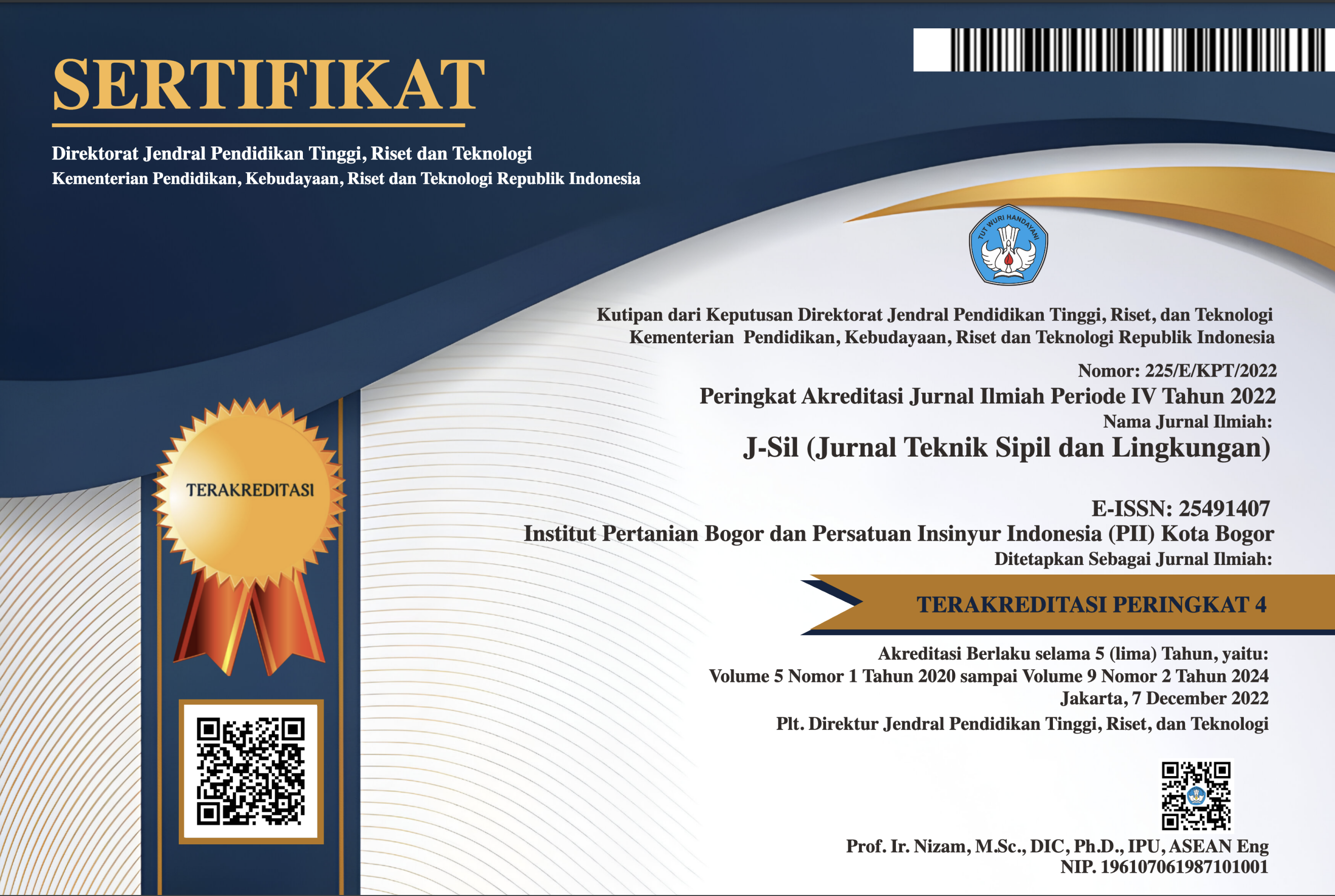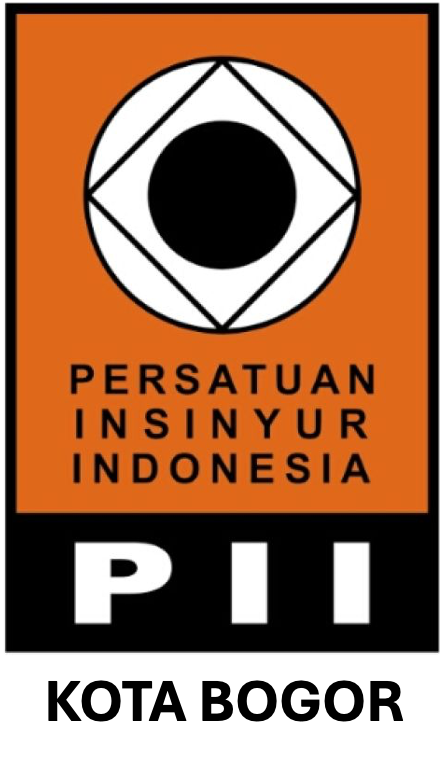Analisa Model Evaporasi dan Evapotranspirasi Menggunakan Pemodelan Matematika pada Visual Basic di Kabupaten Maros
Analysis of Evaporation and Evapotranspiration Model Using Mathematical Modeling on Visual Basic in Maros Regency
Abstract
The approach to calculating evaporation and evapotranspiration, both potential and actual, varies widely. The models used to estimate the amount of evapotranspiration, particularly at the Maros Climatology Station, Maros Regency, South Sulawesi. Evaporation models use the Penman, Priestley, Bruin, and Valiantzas models while evapotranspiration models use the Penman, Hargreaves, Jensen-Haise, Penman-Monteith, Radiation, Turc, and Makkink models, where all of these methods use climate data, such as are the minimum temperature (Tn), maximum temperature (Tx), air temperature (Ta), average humidity (RH), rainfall (R), duration of sun exposure (SS), and maximum wind speed (U) in calculations using Visual basic program in Microsoft Excel in the form of code. Thus, it is necessary to conduct an analysis of the suitability of the model to the results of the observations in order to find out which model is suitable according to the results of the largest coefficient of determination (R2). Based on the results of the model suitability analysis, a selected model was obtained, namely the Valiantzas model with a value of 0.980 in the evaporation calculation and the Jensen-Haise model, namely 0.889.
Downloads
References
Bruin K. 1979. The Priestley-Taylor evaporation model applied to a large shallow lake in the Netherland. Journal of Applied Meteorology. 18 : 898-903.
Capece CL. 2002. Comparison of Evapotranspiration Estimation Methods. Yogyakarta (ID) : Kanisius.
Doorenbos, P. (1977). Guideline fo Predicting Crop Water Requirement. Rome (IT) : FAO.
Penman HL. 1948. Natural evaporation from open water, bare soil and grass. Proceedings of the Royal Society, (pp. 120 - 145).
Priestley T. 1972. On the assessment of surfave heat flux and evaporation using large-scale parameters. Jurnal Monthly Weather Review. 100 : 81-92.
Riang MS. 2014. Analisa faktor-faktor yang mempengaruhi hasil produksi padi di Deli Serdang. Saintia Matematika. 2 (1) : 71 - 83.
Rokhma. 2008. Menyelamatkan Pangan dengan Irigasi Hemat. Yogyakarta (ID) : Kanisius.
Singh X. 1997. Evaluation and Generalization of 13 Mass-transfer Equations for determining free water evaporation. Hydrological Processes. 11 : 311-323.
Sujana. 2001. Metode Statistik. Bandung (ID) : Tarsito.
Valiantzas. 2006. Simplified version for the Penman evaporation equation using routine weather data. Journal of Hydrology. 331, 3 - 15.
Zain S. 1995. Ekonometrika Dasar. Jakarta (ID) : Erlangga.
Copyright (c) 2020 Jurnal Teknik Sipil dan Lingkungan

This work is licensed under a Creative Commons Attribution-NonCommercial-NoDerivatives 4.0 International License.
Authors who publish with Jurnal Teknik Sipil dan Lingkungan, JSIL agree to the following terms:
a. Authors retain copyright and grant the journal right of first publication with the work simultaneously licensed under a Creative Commons Attribution License that allows others to share the work with an acknowledgment of the work's authorship and initial publication in this journal.
b. Authors are able to enter into separate, additional contractual arrangements for the non-exclusive distribution of the journal's published version of the work (e.g., post it to an institutional repository or publish it in a book), with an acknowledgment of its initial publication in this journal.
c. Authors are permitted and encouraged to post their work online (e.g., in institutional repositories or on their website) prior to and during the submission process, as it can lead to productive exchanges, as well as earlier and greater citation of published work (See The Effect of Open Access).











